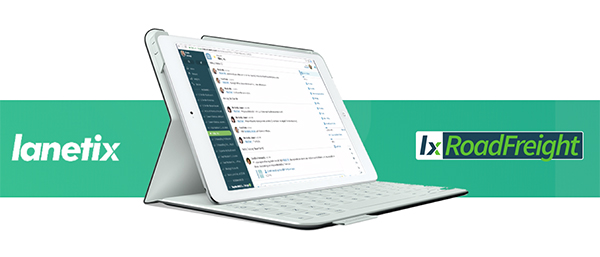By Chris Chin, SyncShow is an online marketing agency  supporting transportation, manufacturing and professional services clients. We specialize in inbound marketing, lead generation and SEO that produces measurable results that will help your company reach its goals.
supporting transportation, manufacturing and professional services clients. We specialize in inbound marketing, lead generation and SEO that produces measurable results that will help your company reach its goals.
Digital marketing is a misnomer and a construct that misses the fact that as we continue to move forward, “digital” is the way we interact. In a coronavirus world, we’ve seen trade shows move online, Zoom meetings replace the face-to-face and CRM tools enable our sales and marketing teams to better speak to our customers. Everything we do touches digital, so any marketing we do is at minimum, tangentially digital marketing. And that, in combination with the push for analytics and ROI, has blurred the fundamental reality that marketing has always had the same goal: to create a lasting relationship with your customers that helps them solve problems and prefer you over their other choices. If you do that by making it easy for your customers to understand you, find you and purchase your products or services, then you’re winning as a digital marketer.
Marketing is there to create a lasting relationship with your customers that helps them solve problems and prefer you to your competitors.
During the 2020 Transportation Marketing & Sales Association (TMSA) Virtual Conference, I led a roundtable with marketing and sales leaders across the industry and was delighted to hear that many of them are integrating digital at the core of their paths moving forward, but many of them are having similar challenges.
- How can we create meaningful and valuable content that meets our customers on their paths to purchase and ensure we have the measurement solutions to determine what’s working?
- With conferences and trade shows traditionally central to lead development in the transportation industry, how can we replace those relationship-building events with digital solutions?
We had a great discussion surrounding what different companies have tried and were expecting. There were many commonalities, but it became very clear that there was no silver bullet on what successful digital marketing looks like today. We did, however, find a few common themes:
- Social media is rising in importance. Facebook has emerged as the top lead generator for truck driver recruitment. LinkedIn is king for B2B marketing and an excellent supplement to the traditional sales process. Many are seeing strong benefits getting uncomfortable with social by trying new things and expect to see:
- Growth in Instagram
- Short, less polished (i.e. more user-generated) video
- Exploring handing the reins over to drivers and allowing them to create their own content in a controlled manner
- Search engine optimization (SEO) and content creation are great ways to establish brand position, align your service offerings with interested consumers and create a pipeline to further nurture leads with your inbound marketing tools. We also saw a shift in the types of content being produced, from news items and broader storytelling to content that helps resolve a potential customer’s needs. We heard from one marketer that a resource page developed by one of their interns has remained one of their best-performing content pieces because it very clearly and simply meets a customer’s need for more information. This content is also beneficial for the sales team, who is able to use thought leadership content to spark a conversation with a prospect.
- Measurement feels lacking. Marketers struggle with finding and interpreting the data that helps them understand what's working and what's not. Few have entered into building out a customer relationship management (CRM) strategy or attribution path that will help them to better understand how marketing is supporting their sales funnel.
Give me control of your transportation company’s marketing plans and these are the new practices I’d recommend you start testing out.
- Identify what you care most about. In most conversations, the answer is some version of leads, but that can have different meanings. There’s a balance between total lead generation versus qualified lead generation. Do you just need people to understand what it is that you sell? Or why to choose you over a competitor? Is it bottom-line revenue? Each of these choices is going to lead to a different marketing and measurement plan to help you reach your goals.
- Start investing in a CRM, get your sales team familiar with it and in the habit of keeping it updated. Bring in your finance and marketing teams early on so they have a seat at the table and you set up the CRM to provide them the information they need. This process will take time and hard work, but it will help you in the long run by improving process flow, helping you identify what’s working and creating opportunities for personalization you never had before.
- Personalization is here, and the amount of content you need to develop for it is expanding. So, it’s best to start learning. This could take the guise of customized email drip campaigns that speak to different job functions, smarter ad targeting, long-tail keyword content writing or even the new big daddy, account-based marketing. We’re past the one-size-fits-all marketing paradigm, and are an on-demand society where your best way to find customers is by meeting their needs.
- Be less precious with your brand. Developing professional, quality content can be expensive and time-consuming. In the world of social, blogs and infographics, 90% “good enough” today is often better than 100% perfect tomorrow. Consider developing content on the fly, enabling your sales team to share their experiences, pushing out a new video and seeing how it does. With the amount of content in the world, the worst thing that is likely to happen is you’re ignored, but the upside is that you create a meaningful interaction with someone looking for new content.
Like this kind of content?
You can still view our educational sessions from the 2020 Logistics Marketing & Sales Virtual Conference in our on-demand package for as little as $199! Learn More

 supporting transportation, manufacturing and professional services clients. We specialize in inbound marketing, lead generation and SEO that produces measurable results that will help your company reach its goals.
supporting transportation, manufacturing and professional services clients. We specialize in inbound marketing, lead generation and SEO that produces measurable results that will help your company reach its goals.

